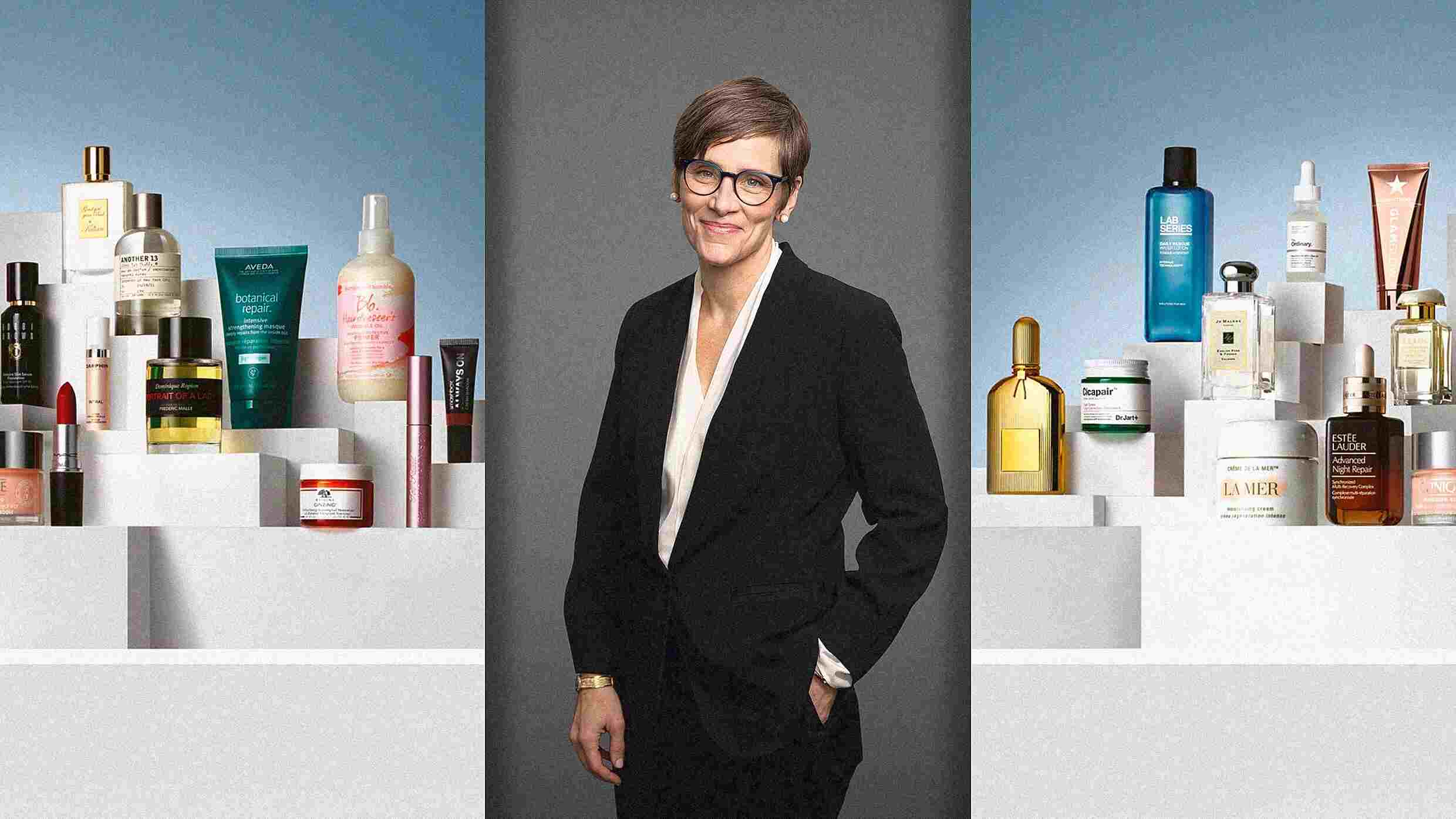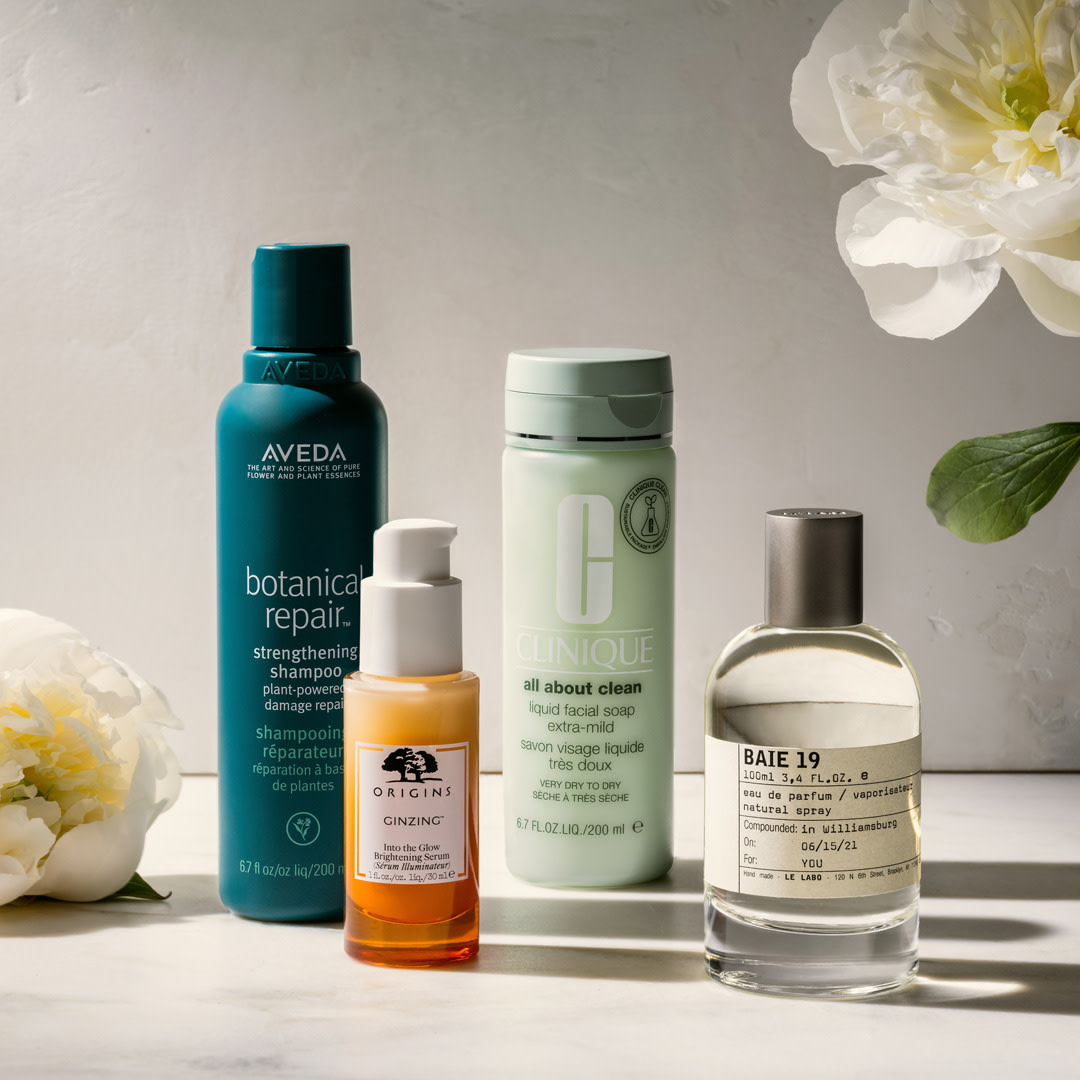- | 8:00 am
Estée Lauder’s chief sustainability officer on how beauty is getting greener
Nancy Mahon says the industry took on tough social issues early on, including the HIV/AIDS crisis. And now, Estée Lauder is applying that learning to sustainability.

As a growing number of people decide to switch careers to work on climate change, we’re running a series of interviews with people in climate-related jobs about their work, from Google’s Kate Brandt and Ikea’s Karen Pflug to PepsiCo’s Jim Andrew and Delta Air Lines’ Amelia DeLuca.
Estée Lauder has been a beauty brand name since the 1940s—but now, nearly 100 years later, it’s also the parent company of 24 global brands across skincare, makeup, and perfume, including Aveda, Clinique, MAC, and Tom Ford Beauty. Overseeing the environmental components is chief sustainability officer Nancy Mahon, who sets overarching goals across the corporation in such areas as energy, water, sourcing, and packaging, and tracks how each brand is implementing them.
Mahon discusses some of these initiatives, which are especially important, given that the beauty industry has been widely criticized for its single-use packaging, not to mention its vast consumption of resources—from water to palm oil—which is linked to mass deforestation and rainforest habitat loss. And, though Mahon, a lawyer by training, has a background in nonprofit work—as a former chief executive director of God’s Love We Deliver and executive director of the MAC AIDS Fund—she suggests the private sector has a significant role in driving innovation in sustainability.
As the CSO of a corporation with more than 20 brands, how do you go about overseeing sustainability?
[I aim to be] a relationship builder across the organization. At the end of the day, the corporation doesn’t sell anything; the brands do. What we want to do is drive value for the brands. A lot of it is about setting realistic goals and making sure people have the tools and the resources to make [them] happen.
We set a corporate goal saying that every one of our brands needs to have a purpose that they’re focused on. The brand presidents lead. They know what is best within their equity. They know what’s best in terms of what their consumers are looking for.
An example would be our corporate packaging goal. We have a goal that says 75% to 100% of our packaging will be recyclable, refillable, recoverable, reusable [by 2025]. We want to work with our regions to make sure it’s feasible. But on a brand level, we have a scorecard, and we let each brand president know: Hey, you’re nowhere near 75%. Or hey, you’re at 80%, thanks so much for helping out.
[Another area] where there’s give-and-take is samples. A big piece of our model in beauty is encouraging folks to trial, [but] sample packages are a particular environmental hazard. We worked with the Aveda team and our packaging team to create paper sample sachets. So there’s an example where we’re going with the business model, but basically trying to figure out how we can innovate.
Le Labo is a B Corp. Our team helped them gain their B Corp certification. It has been an incredible value driver for the brand to be able to say we are a B Corp, and this is what we stand for. [For] other brands, B Corp might not be as valuable. So we work on third-party verification but only with a brand president saying that that’s what they want to do.

What do your consumers care most about within sustainability?
There are significant regional differences. You won’t be surprised [that] in Europe, we have very high demand, particularly on ingredient transparency. In the U.K., [consumers are] very much focused on reducing the carbon footprint of the company; whereas in the U.S., what we’ve seen is much more focus on reducing their [own] carbon footprint. So in the U.S., we’ve had a carbon calculator on the Aveda website.
We’ve seen very high demand around sustainable packaging. We’ve also created a [Responsible Store Design Program] that we’re working on with our various brand leads. For instance, we have an Origins sustainable design store in China, that [was] a decision between the Origins brand president and the Chinese region.
We see a huge demand focused on ingredient transparency and education. So instead of saying [a product is] clean [and] free of this [and] that, we have ingredient glossaries [for some of our brands]. We’ve seen consumers spend a lot of time on the glossaries—and they often buy from the glossaries. We’re seeing a very high literacy rate, and we’ve found partnering and educating the consumer is the best way to go.
We also see our employees as stakeholders. 80% of all [U.S.] employees want to work in a place where they share their values; our number is over 90%. And what we’ve seen is they’re really interested in climate. We might have an employee in the Bobbi Brown brand who’s really interested in climate work that’s going on in the Le Labo brand. So we spent a lot of time also matching people with causes [and sharing best practices].

Is there an example of a product that has changed because of sustainability strategy?
You’ll see in the Aveda brand a movement toward naturals and botanicals [with the Botanical Repair product]. The La Mer brand is evolving some of its Crème de la Mer to focus on organic kelp. It’s a soft cream, which is a very popular product in Asia. So, we’ve definitely seen on the ingredients front an evolution toward more clearly organic and natural, and fewer ingredients. We have historic products like Advanced Night Repair switch to a glass bottle. We have seen an evolution toward refills [including the Estée Lauder brand’s new refillable lipstick and its moisturizer, which switched from a recyclable glass jar to a refillable jar].
The beauty industry has been criticized for its resource consumption. Are these priorities for you?
Because we are essentially a manufacturer, water is a priority issue. Our oldest manufacturing facility is in Melville, Long Island, and we just put [in] a new water recycling system, so we’re using less virgin water. It’s cheaper for us not to be taking fresh water from the ground. For water, we currently have an A [grade] in CDP [an independent scoring methodology for a company’s environmental performance].
On climate, we’ve been carbon-neutral for four years in a row on Scopes One and Two. [Ed. note: through a mix of offsets, renewables, and other energy-efficiency projects.] Like many folks, we are working hard on Scope Three with our suppliers. Our general philosophy is, how do we leverage our size? 220 suppliers have registered with CDP to give us their data because their Scope One and Two is our Scope Three. Rather than using a stick, we want to use a carrot and move more folks toward carbon neutrality.
How do you think the beauty industry more generally has done on sustainability?
[The beauty industry has] a very high numbers of female consumers . . . who [tend to] lead with their values. Our consumers are very well-educated about our products. A lot of our products’ growth across the world is all about person-to-person recommendation. That happened before TikTok, but that’s actually how it works. So we always depend upon and listen to our consumers.
The advantage of a company like ours is that we have so many people at counters who are listening to our consumers’ problems, solving with the consumers, whether it be Le Labo or Clinique. I go to counters [and] talk to the retail staff.
Beauty has taken on a lot of really tough issues early on. MAC took on HIV/AIDS; talked about trans folks, had trans makeup artists. Jo Malone has taken on mental health. Avon took on domestic violence. I think that beauty generally has had a lot of courage.
In sustainability, there is an advantage to being a first mover or an early mover. We invested five years ago in a virtual power purchase agreement in Oklahoma with some other companies. You probably have seen recently that the cost of green energy has gone up. Well, we got in very early. And we’ve been able to sell that green energy back into the grid.
How do you view the private sector’s role in sustainability?
It was very clear to me working at a big foundation and NGOs that we didn’t have all the answers—and we didn’t have enough money. You’re seeing that now with climate, where the head of the World Bank said there’s no private donor that has enough money to solve climate. It’s a great question of, How does business show up? What are we uniquely good at?
I think we’re good at strategy. We have a level of strategic thinking—and, candidly, a level of capital—that isn’t on the ground in just governments, and just NGOs, and just foundations. In packaging and climate, we don’t have all the solutions that we need to reach our goals—us, or the world. Our bread and butter is innovation, so how do we innovate? How do we work with a supplier, that might not otherwise create paper sachets, to incentivize them? What does that business deal look like? How do we invest in a wind farm using a procurement team that has never invested in a wind farm? That to me is the creative, interesting challenge.
There are some particular opportunities and challenges we have. Most beauty packaging is thrown away in the bathroom, [and] there’s not a lot of recycling in bathrooms versus kitchens. So, we started to think about [partnering] with our retailers around take-back programs, making it easier to recycle. We have packages that have multiple materials together: Is there a way to make them a little bit more like a Lego, where you can take them apart and dispose of them?






































